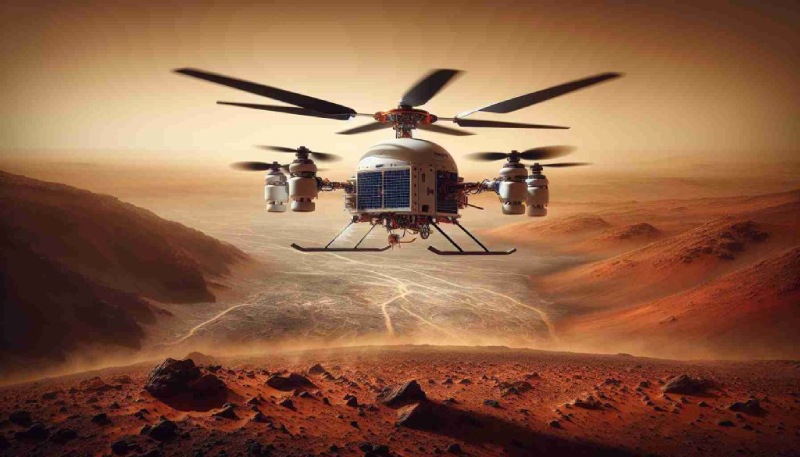Since arriving on the planet in February 2021, NASA’s Ingenuity helicopter—technically a rotorcraft—has made dozens of tiny aerial excursions across Mars; however, its most recent flight set a new record for the tiny aircraft. According to its flight log, Ingenuity’s 69th flight on December 21st, 2022, was also its furthest flight, NASA reported. In less than 135 seconds, the four-pound, 19-inch-tall helicopter covered approximately 2,315 feet at a speed of nearly 22.5 mph, exceeding its previous record of approximately 2,310 feet, set in April 2022.
Even though Ingenuity’s most recent flight was already spectacular, the journey went even more smoothly than anticipated. NASA’s flight log for Flight 69 indicates that the agency calculated the helicopter’s altitude gain to be 2,304 feet in 131 seconds.
Thus far, Ingenuity has flown nearly 10.5 miles across the surface at altitudes as high as nearly 80 feet in 125.5 minutes. The helicopter is moving along, taking pictures of the ground below it to send back to NASA’s Jet Propulsion Laboratory (JPL) team in California, which is in charge of the program. According to Digital Trends, NASA engineers have so far been able to plan effective, secure routes for the project’s Perseverance rover with the use of the visual aids. In certain cases, the rover even made a detour to investigate newly discovered nearby geologic formations after seeing them in photos.
Even in the absence of its most recent achievements, ingenuity has long outlived its initial projections. NASA had no intention of using the aircraft as a key component of the Perseverance mission when it was first launched back in 2021. Instead, NASA expected it to only last for five flights to test avionic capabilities in the thin Martian air, which makes up just 1% of Earth’s atmosphere.
But not everything has gone smoothly for Ingenuity. The helicopter’s solar arrays were unable to fully recharge in May 2022 due to a seasonal increase in atmospheric dust. As a result, the helicopter experienced a brief blackout. Fortunately, engineers were able to resolve the issue and get in touch with their rotorcraft again. Now that it has nearly 14 times more trips under its belt than it had originally planned, Ingenuity doesn’t seem to be slowing down anytime soon.
Since the helicopter performed better than expected, NASA thinks that more sophisticated versions of it could be used in other parts of the solar system as well as on upcoming missions to Mars. For now, though, Ingenuity is taking things day by day; this week is also reportedly the tentative date of its 70th flight.
